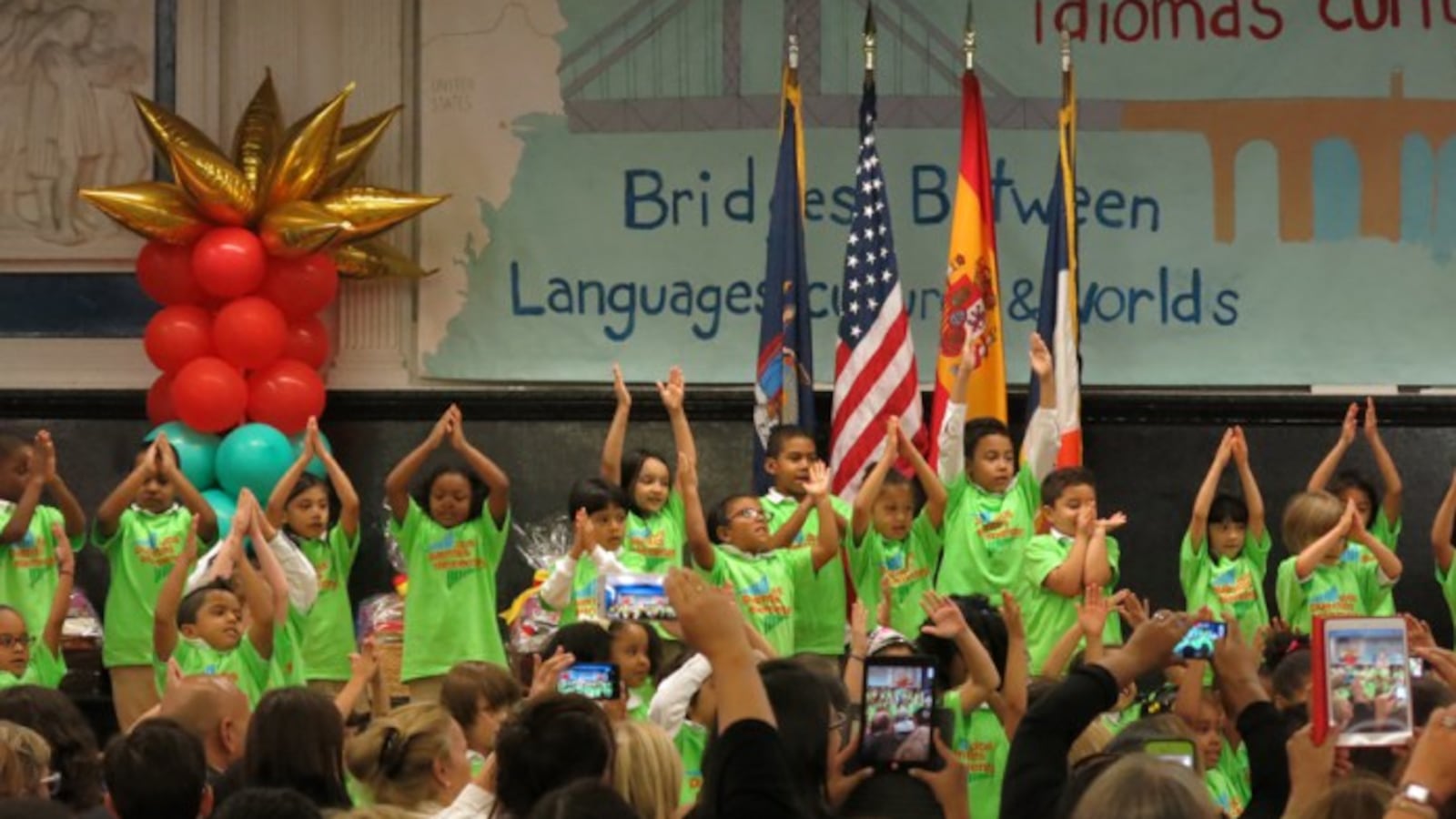When Adriana Maya transferred her son into a public school that specializes in serving students with disabilities this fall, she requested that his learning plan be translated into Spanish, her native language.
But the school didn’t have anyone on hand to translate, and she said officials told her it would take time. In the meantime, Maya said her advocacy for her son has been hampered without the translated plan and has caused confusion around his use of an iPad in class. She’s been waiting since October.
“The IEP is not in Spanish, so it’s hard for me to say, ‘Here’s where it says that.’ Because without a translation I don’t even know what it says,” she said in Spanish.
Parents are legally entitled to translation services to navigate the special education process, including converting the learning plans — known as individualized education programs, often referred to as IEPs — into their native language. But the responsibility to request the translation falls on parents who may not know they have the right to make the request and on individual schools to arrange a translation, creating a patchwork system that often leaves parents in the dark about crucial details of their children’s education.
Now, education department officials have quietly launched a pilot program to centralize the translation process instead of asking schools to sort out the logistics on their own. Beginning in September, schools in District 9 in the Bronx, District 24 in Queens, and District 75 (a citywide district for students with more complex disabilities) can ask the education department’s translation department to handle the request.
“It’s an evolution of the services we’re providing in the translation unit,” said Kleber Palma, who directs the education department’s translation and interpretation department, which has grown to include nearly 50 people. “We’re learning now what works and what doesn’t work.”
Out of the city’s 225,000 students with disabilities, roughly 77,000 speak another language officials said, dwarfing the number of students in Boston’s entire school system.
Through the new pilot program, expected to cost $2.9 million this year, the city’s translation office has handled 100 requests since September to convert learning plans into Arabic, Bengali, Chinese, Korean, Russian, and Spanish. The city does not track how many translation requests individual schools receive each year outside of the pilot.
Centralizing the translation process using a combination of department staff and outside vendors has a number of advantages, Palma said. The learning plans are highly technical documents that can be difficult to translate, especially if a school is leaning on an outside company with limited knowledge of special education jargon. With a centralized process, the city can reuse boilerplate language to explain certain services, freeing up translators to focus on parts of the learning plan that are specific to each student.
The learning plan is “something that’s not as easy as translating a welcome back letter or a fundraising flyer for a PTA,” Palma said. “Sometimes we have to go back to schools and ask what they meant.”
There are also technical benefits: The notoriously glitchy computer system that tracks student learning plans, known as SESIS, can only spit out PDFs, which can make it difficult for schools to figure out how to enable translators to edit them. A centralized process means the city only has to solve that problem once, Palma said, instead of schools having to come up with fixes on their own.
The education department has long failed to provide interpretation services to help parents with limited English navigate the special education system, advocates say, an issue that prompted a civil rights complaint in 2012. Special education advocates said the pilot program is a start, but expressed concern about the pilot’s narrow scope and that the burden is still on parents to request translated documents instead of the city providing them automatically.
“I’m all for starting somewhere,” said Lori Podvesker, a disability policy expert at INCLUDEnyc, an advocacy organization that works with parents who seek translation services. “I also think it’s outrageous that this isn’t happening [citywide].”
Others said it wasn’t clear whether all schools in the pilot districts know about the new translation program, which parents can access by phone, website, or by approaching their school to make a request, officials said. Maya’s son, for example, attends a school that should be in the pilot program.
Paola Jordan, who co-directs Sinergia, an organization that helps Spanish-speaking families navigate special education services, said she has heard from families who still sometimes face resistance to requests for translation services at schools in the pilot program.
Still, some schools say the program could make a big difference. Caroline Rivera, an assistant principal at M.S. 327 in the Bronx, said she anticipated the school would double the number of learning plans that are translated through the pilot program, a process that typically took months and involved contacting an outside vendor.
“Because they know it’s more reliable and it’s a simple process, [teachers] will be that much more likely to urge parents who need it and reassure them that it’s something that can easily be done for them,” Rivera said. “It makes that partnership that much stronger because everyone is on the same page.”

